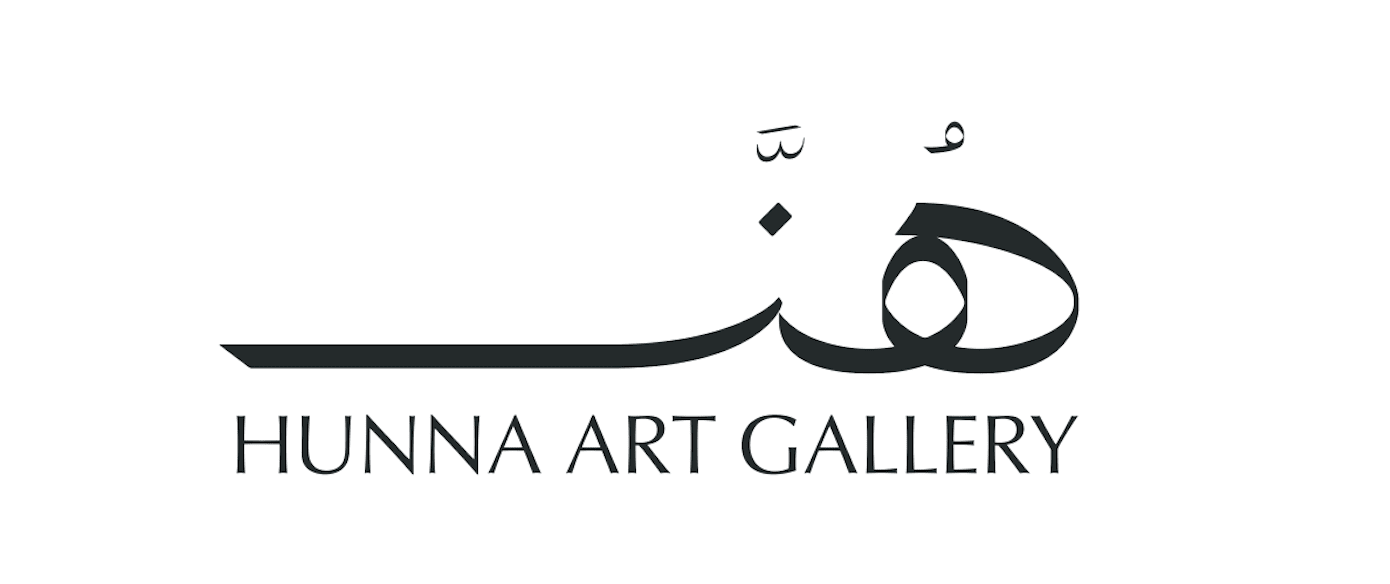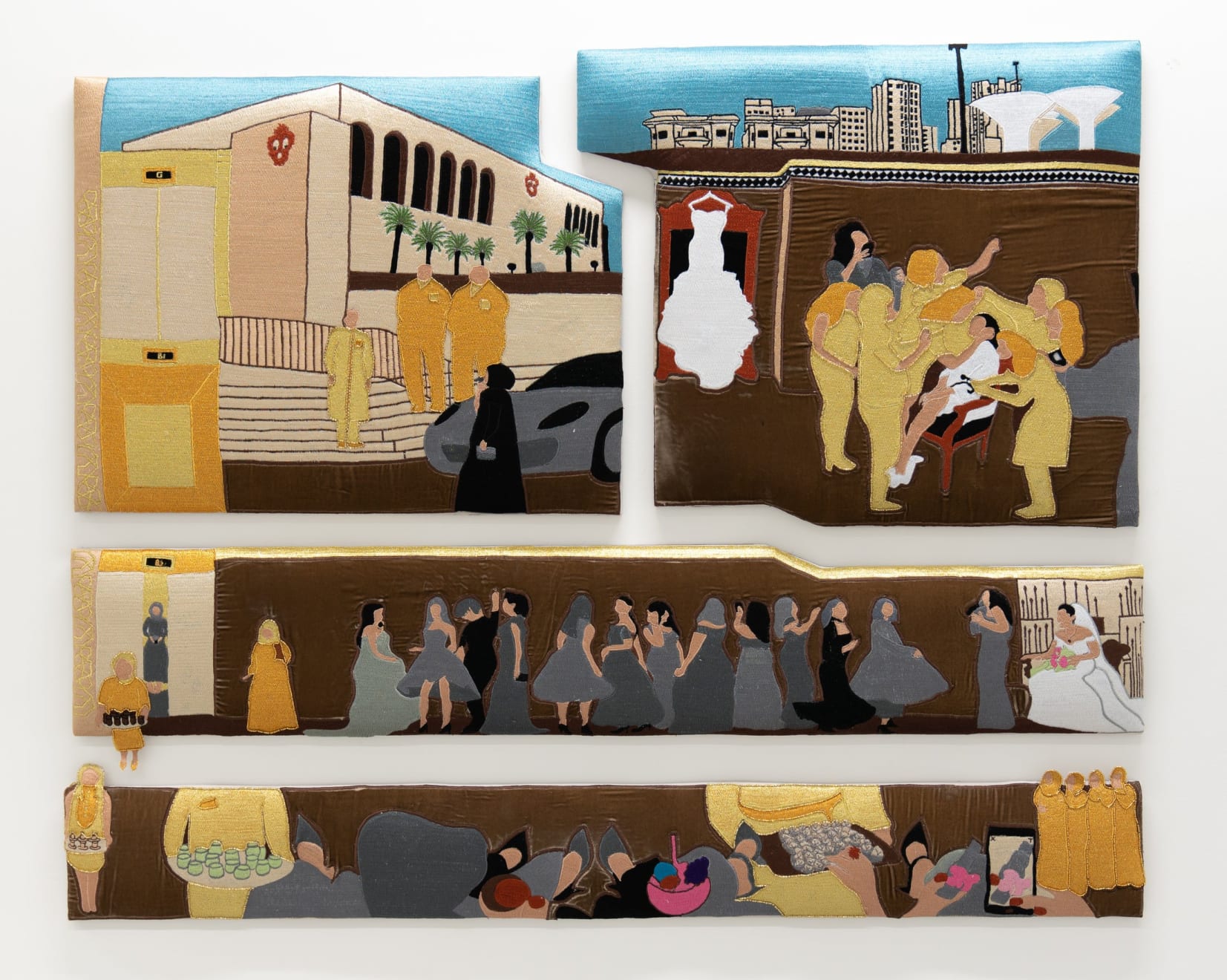Menart - Brussels
Overview
Unique in Europe, Menart Fair (ME.NA for Middle East and North Africa) is an international modern and contemporary art fair dedicated to the art of the region. After the success of its launch in Paris in 2021, confirmed in 2022, Menart Fair is coming to Brussels for its third edition and will be taking place at the Boghossian Foundation - Villa Empain, a key venue in the artistic life of Brussels.
For its participation to Menart Fair, Hunna Art will bring to Brussels a compelling selection of new artworks from Alymamah Rashed, Amani Al Thuwaini, Eman Ali and Zayn Qahtani that reflect their current research of the Arabian Peninsula's history, mythologies and contemporary cultures.
After ten years of success of Beirut Art Fair in Lebanon, Laure d’Hauteville, founder & fair director, launches MENART FAIR, and appoints Joanna Chevalier as the artistic director. MENART FAIR is the international modern and contemporary art fair, dedicated to artists from the Middle East & North Africa, selected by must-see galleries.
The artists featured in MENART FAIR come from the Middle East (Lebanon, Syria, Palestine, Jordan, Iraq, Turkey), the Gulf States (Iran, Saudi Arabia, Kuwait, Bahrain, Qatar, United Arab Emirates, Oman, Yemen) and North Africa (Morocco, Algeria, Tunisia, Libya, Egypt). Unique in the West, MENART FAIR showcases a burgeoning art scene, whose dense and strong production is now supported by many renowned museums and institutions around the world.
Alymamah Rashed
Fragments of memory gather on the shore:
I collect a fighting conch, a Venus sunray, an eastern Murix, and a sprial whorl.
I collect broken Kashi, the Kuwaiti term for Terazzo, fragments from the abandoned Al Sanad Mosque.
I collect a lost pottery fragment from the bronze age with three stripes on it.
I collect beach rocks near Al-Khudr’s lost myth.
My spirit hides, my body curves, and my eyes withhold the history of Failaka.
I collect a fighting conch, a Venus sunray, an eastern Murix, and a sprial whorl.
I collect broken Kashi, the Kuwaiti term for Terazzo, fragments from the abandoned Al Sanad Mosque.
I collect a lost pottery fragment from the bronze age with three stripes on it.
I collect beach rocks near Al-Khudr’s lost myth.
My spirit hides, my body curves, and my eyes withhold the history of Failaka.
The works presented by Alymamah Rashed at Mena Art Fair 2023 introduce her current research of mythology, objecthood, artefacts, and lost fragments of Failaka Island in Kuwait. Failaka has been a land of transit history starting from the bronze age, the Greek Hellenistic era, and all the way to the post gulf war of Kuwait and Iraq. The island is preserved through its apocalyptic presence, yet, Rashed wanted to produce her own relationship to the island through its current natural and geological conditions.
Rashed collected found objects from the island, such seashells, terrazzo, pottery fragments, and beach rocks. Each collected object is dissected and studied through the figures expansion and shrinkage. Each figure is a spirit that lives within the found fragment creating a metamorphic body in existence. In other words, the body wears the spirit and the spirit does not wear the body. The distinction between the object and the spirit becomes a singular body.
The body intertwines itself within itself in order to birth a new shelter of existence for itself.
Amani Al Thuwaini
Inspired by the Islamic miniature drawings, this composition features silhouettes of both places and people. On the tapestry, the narrative is broken down into four sequences to depict the rituals behind a wedding in Kuwait.
From the bride’s clothing to the female runway style dance floor, some of the characters stand out embroidered in gold. Through this technique, the choice is made to to highlight the presence of the normally-unnoticed helpers who make the event possible to the smallest detail. By shedding light on the unseen and ''the other'', I emphasise how local traditions are often challenged by the craving for opulence.
Eman Ali
"Banat Al Fi'9a (The Silver Girls)" transports us to an imaginary world where two young women challenge the oppressive rule of the late Sultan Said bin Taimur and cultural norms of their time in 1960s Oman. The visual series captures the era referred to as the "dark ages," when modern items like radios, bicycles, and sunglasses were banned.
The two protagonists embark on a surreal journey through the country, a time when travel itself was a challenge. Despite the obstacles, they move with grace and fierce determination, engaging in activities that transcend the conventional expectations for women of their era. Their artistic expressions are set free, and they chase their dreams with an intense passion that permeates the narrative with a dreamlike quality.
As the story unfolds, we are transported into a world where the traditional silver jewelry of Omani culture takes on new life. The silver is reimagined as a retro-futuristic material, coating the daily activities of the two women and symbolizing the liberation that women would come to experience in the future.
Eman Ali has breathed life into "Banat Al Fi'9a (The Silver Girls)" using AI technology, creating a captivating story that explores the themes of freedom and the human spirit from the perspective of two young women who dare to dream. Their journey symbolizes freedom, illuminating the way forward as they radiate with hope and an otherworldly aura.
Banat Al Fi'9a is a translation of ‘The Silver Girls’ into Arabizi/Arabish, a form of digital communication used in the Arab world where Latin letters and numbers are used in lieu of the Arabic alphabet.
Zayn Qahtani
Sirens are, by nature, creatures of contradiction. Symbolically, they are elusive - in every folk tale, they almost always see you before you see them, making them difficult to catch. Conversely, the very nature of the siren is designed to make the victim want to be caught - hypnotic eyes, bewitching dance and trance-like songs lure men to their demise like a starving bull to freshwater.
In Zayn’s series of siren explorations, we see them engaging in multiple acts of ‘drawing in’ the viewer. In Drown Into You, the Siren divides out of her singular body another mirroring image, creating a portal. The eyes of the siren tease the viewer, handing them the keys to the door of freshwater centered in the middle of the drawing. An unsettling feeling rests in the calmness of the brushstrokes that depict the scene, prompting us to ask if there is anything hidden beyond this facade of seduction.
In The Bath shows a siren absorbing the energy from the surrounding waters into her body through her hands. Engaged in ritual, golden polylactide forms sculpted around the figure create once again the illusion of another portal for the viewer to step in to.
In Through The Looking Glass, Qahtani uses the symbology of a siren to depict her own frustration with vision loss. The ouroboros shaped siren boasts an impish smile on her face, holding what seems to be an eyeball in each hand. Her tail forms a circle resembling the inside of an eye - stars shine with a menacing dance of illuminating disorientation in the center of the drawing.

















